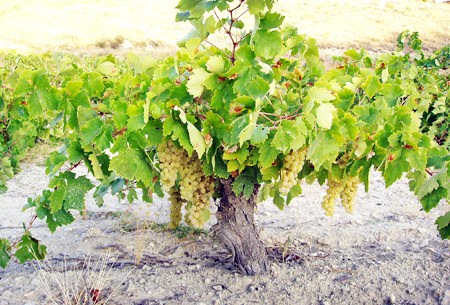We have to thank the eighteenth century English poet and hymn-writer William Cowper for this phrase, although its origins could well be earlier. The expression you hear today is not exactly what Cowper actually wrote, which was “Variety’s the very spice of life that gives it all its flavour.” He was one of the most popular poets of the day and also gave us the line “God moves in a mysterious way” which I sometimes quote when I trip over one of the dogs.
A friend of mine drinks nothing but red wine, thus depriving himself of half the wines in the world. Another acquaintance is reluctant to buy an unfamiliar bottle on the grounds that he might not like it. Of course, I’m guessing here but I bet a huge number of people, whether they know it or not, restrict themselves to Cabernet Sauvignon, Shiraz or Chardonnay. This is the “I know what I like” mind-set which is hardly an adventurous approach. Up to them of course, but it does seem a lost opportunity when you stop to consider how many different wines there are in the world. And while we’re on the subject, just how many are there?
 Airén vines trained low off the ground (Photo: Bodegas Ambite).
Airén vines trained low off the ground (Photo: Bodegas Ambite).
Well, a research team from the University of Adelaide recently compiled a database covering virtually all the world’s wines. Among other things, their study revealed that over 1,200 different grape varieties are used to make wine in forty-four countries. It would be something of a challenge to remember the names of all those grapes, should one feel the need to do so. On a good day, I could probably manage about fifty or sixty from memory but that’s about it. Many of the more obscure varieties never leave their own country, so in these parts you’d be unlikely to find a bottle of Bogazkere, Magaratch Bastardo or Mtsvani, assuming you could manage the pronunciation.
I am all for a bit of variety because it’s just too easy to fall into a rut. If you want to extend your vinous horizons, why not try something unfamiliar just once a month for example? If you prefer reds, there are many alternatives to the Big Four. For light wines, try a Cinsault or Grenache from southern France or an Italian Bardolino. If you prefer something full-bodied, look for a Carmenere from Chile, a Malbec from Argentina or a Montepulciano d’Abruzzo from Italy.
If you normally drink reds, you could venture into uncharted waters and try a rich full-bodied white, like an oaked Chardonnay from Chile which has a buttery flavour, loads of vanilla and sometimes slightly smoky overtones. It makes a splendid accompaniment to roast pork, turkey or chicken and some Thai dishes too. The Viognier makes quite full-bodied whites and the Alsatian Gewürztraminer is a dry, rich and satisfying wine which goes well with many spicy foods. Riesling can produce powerful dry wines and the most rewarding come from the Mosel, the Rhein or Alsace.
Castillo del Moro Airén-Sauvignon Blanc 2012 (white), Spain (Bt. 599 @ Wine Connection)
Airén grapes come from the largest plain in the Iberian Peninsula – La Mancha. It’s a wind-swept place over 1,500 feet above sea level yet, in parts of this hot and arid plain, the Airén (i-REHN) grape thrives. It’s been around at least since the fifteenth century and twenty years ago, it was the world’s top white grape.
This pale gold wine has an attractive, delicate floral aroma with pineapple and gooseberries up front and hints of fresh oranges. You may also notice the grassiness that tends to come with Sauvignon Blanc. The wine is very smooth on the palate but has a pleasing tang of apple-like acidity. It doesn’t have the toe-curling bitterness of some Sauvignons, because the Airén in the blend has successfully softened Sauvignon’s characteristic bite.
Nevertheless, it’s light and refreshing, ample fruit on the palate and an attractive lingering finish with delicate hints of grapefruit. The wine is dry, but not in the dinosaur bones class because there’s a tiny hint of sweetness to the taste. In many ways, this is a real charmer – an unassuming crisp wine that is a delight to drink. At just 12% alcohol content, it would make a lovely apéritif or you could enjoy it with seafood and salads. Perfect I’d say, for summer evening drinking.
Molino Loco Monastrell 2012 (red), Spain (Bt. 599 @ Wine Connection)
Molino Loco wines come from the Castaño vineyards, at over 2,000 feet above sea level in Spain’s Murcia region, about sixty miles from Alicante. The name means “crazy windmill” and refers to one which stands at the edge of the vineyard. Unlike normal windmills, this one evidently springs into action only on days when there’s no wind at all. Now if you ask me, that sounds a little bit spooky.
The Monastrell grape is better known by its French name Mourvèdre. It’s thick-skinned and needs plenty of hot sunshine to ripen. The high hills of Murcia are just the place. The 2011 vintage of this wine won a Silver Medal at the Decanter World Wine Awards. It’s a rich, dark red with an intense aroma of cherries, black plums and a dash of spicy licorice. At first taste, the wine seems quite powerful but it has a soft mouth-feel with a lively touch of acidity. It’s very dry with plenty of fruit and you might also pick up an attractive oakiness. The tannins are quite firm and there’s a long earthy, dry finish.
This is a wine with character. It’s very assertive in style and it’s not for wimps, wusses or those of a delicate disposition. At 14% alcohol content, it begs for rich foods to absorb the high tannin. Rich beef or lamb dishes spring to mind or vegetarian meals made from lentils and rich mushrooms tarted up with pepper and soy sauce. If you’re cooking at home, Monastrell goes well with lavender, rosemary and thyme. Nutmeg is wonderful for enriching flavours, so don’t forget the spice.




